7 Strategies for Avoiding Flash Blow Out
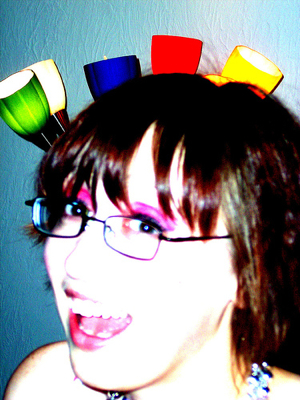
You’re not alone with this problem Sally – I see a lot of shots suffering from ‘flash blowout’ syndrome, many taken on point and shoot digital cameras. In fact while searching on Flickr for such shots today I found so many – it must be one of the most common problems that people face in their digital photography.
The problem that point and shoot camera owners face when it comes to using flash to light a scene is that many point and shoot cameras offer a photographer much less control over how powerful the flash is and what direction the light is pointed (in comparison to a DSLR with a dedicated flash unit that can be bounced in different directions at different levels).
However don’t resign yourself to flash dominated shots – all is not lost. Below are 7 tips for point and shoot users (and DSLR users wanting to use their camera’s flash).
Learn to See Your Flash as a Secondary Light Source
Before I give some specific tips on decreasing the impact of your flash on your shots let me share a tip that a more experienced and wise photographer once gave me.
A flash should only ever be thought of as a secondary light source. In almost every situation that you will want to photograph there will be some level of existing ambient light. This light is important as it is the natural light of the scene you’re trying to capture. Your flash should be used to supplement existing light rather than as the primary way of lighting a scene. If you use a flash as the primary source of light it will look artificial.
As a result of knowing this you’ll find that most of the following strategies are about making the flash more subtle or making the natural light more noticeable.
OK – so lets get on with some strategies and techniques for Avoiding Flash Blow Out:
1. Take a Step Back
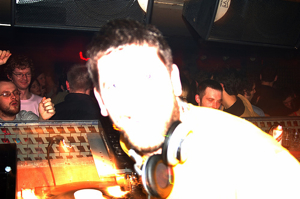
Stepping back further away from your subject doesn’t mean that you can’t fill the frame. You could use your camera’s zoom lens (although this can increase the effect of camera shake) or simply crop the shot later on your computer.
2. Diffuse It
If your digital camera doesn’t allow you to have any control over how much light it outputs (see below for more on this) you might want to consider manually making some changes that limit or diffuse the light coming out of your digital camera. This is something that users of dedicated flash units can do by using specifically made flash diffusers – but point and shoot owners may need to get a little more creative and hack their own solution.
One of the most effective ways of doing this is simply to find some semi opaque material to place over your flash. I’ve seen some point and shoot owners stick a little white tissue paper over their flash and others do this with a little piece of cellotape (the semi-opache kind). Just remember that the color of the material that you use will impact the color of the light that comes out of your flash (and therefore the color cast on the scene) – so white tape or tissue paper will give a more natural light than red or blue!
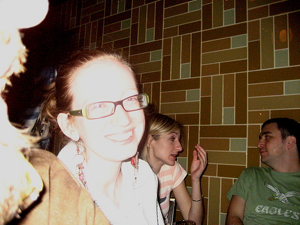
Another strategy that dedicated flash users will often use is to redirect or bouncing the light coming out of their flash off another surface. They are able to do this because these flash units are able to be swiveled and shot into different directions.
Point and Shoot users obviously can’t change the direction that their flash points – but might want to try ‘hacking’ their camera in this way also. I’ve seen a few photographers do this simply by taking a small piece of white card and putting it at an angle in front of the flash so that the flash is redirected up onto the ceiling of the room (or even sideways onto a wall).
This little hack will need some experimentation to get the angle of the card right and the results will vary quite a bit depending upon the situation that you’re photographing (distance to your subject, how high the ceiling is, how much ambient light there is etc). Again, the color of both the card you use as well as the ceiling or wall that you’re bouncing the light off will impact the color cast in the shot.
4. Night Mode
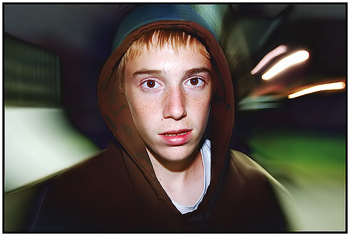
5. Decrease Flash Output
Some point and shoot cameras have the ability to tell the camera just how much flash you want it to use. This won’t be something you all have at your finger tips but check your camera’s manual to see if you have it. If you do, dial back your flash output by a stop or two to see what impact it has. It might take a little experimentation to get the setting just right but it can help you end up with much more natural shots.
6. Add Light
This one could get you kicked out of the party – but getting a little more light on the scene is another pretty obvious way to help the situation. At an extreme level this might mean turning on all the lights in the room (and potentially destroying the mode) or it could mean moving your subjects to a better lit position near a lamp or light. I’ve done this in photographing wedding receptions – simply positioning myself in front of an open door that leads into a better lit room where the light spills in lighting up the faces of guests on the dance floor.
Another way to increase the impact of ambient light on a subject is to think about reflective light. For example photographing someone standing next to a white wall as opposed to a black wall will mean that any ambient light in the room will be bounced onto them (this is similar to having your own reflector).
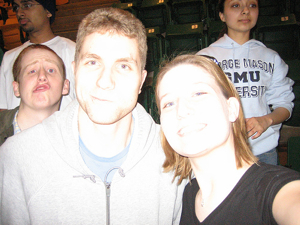
One last way to decrease the impact has on a scene is to tweak some of your camera’s exposure settings – particularly those that impact how the camera treats light like ISO, Aperture and Shutter Speed.
This isn’t the place for a detailed explanation of the basics of exposure (see my previous series on getting exposure right in digital photography) but if your camera allows you to change any of these settings they could be helpful. In brief:
ISO – increase the ISO setting and you increase the camera’s sensitivity to light. This means the ambient light in the room will have more effect and you’ll have less need for flash. Keep in mind that increasing ISO also increases the grain or noise in your shots. Read more on ISO.
Aperture – as you increase the aperture of your camera you increase the size of the hole in your lens and more light is able to get in quickly. So increasing aperture (this means decreasing the f/number) can be something to experiment with. Keep in mind that this means you also decrease the depth of field in your shot meaning you need to get your focus spot on and that not everything in your shot might be in focus. Read more about Aperture.
Shutter Speed – lengthening the amount of time that your shutter is open increases the amount of light hitting your image sensor. This is another factor in exposure that you might like to experiment with. Keep in mind that if there is movement in your scene (even small movements) that the longer the shutter is open the more blur you’ll get in your shot. Read more about Shutter Speed.



.gif)





